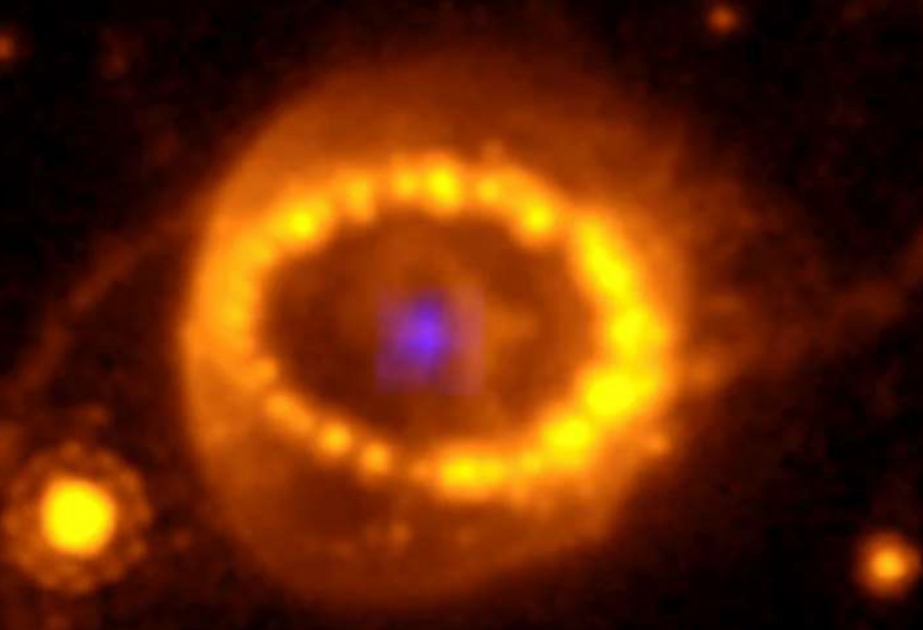Using the James Webb Space Telescope (JWST), astronomers have ended a nearly decade-long game of celestial hide-and-seek after they discovered a neutron star in the wreckage of a stellar explosion, according to Space.com.
Supernova 1987A represents the remains of an exploded star that once had a mass around 8 to 10 times that of the sun. It is located around 170,000 light-years away in the Large Magellanic Cloud, a dwarf galaxy neighbor of the Milky Way. Supernova 1987A was first spotted by astronomers 37 years ago in 1987, hence the numerical aspect of its name. As it exploded, Supernova 1987A first showered Earth with ghostly particles called neutrinos and then became visible in bright light. This made it the nearest and brightest supernova seen in the night sky over Earth for around 400 years.
Supernova explosions such as this are responsible for seeding the cosmos with elements like carbon, oxygen, silicon and iron. These elements ultimately become the building blocks of the next generation of stars and planets, and can even form molecules that may one day become integral to life as we know it. These explosions also birth compact stellar remnants either in the form of neutron stars or black holes; for 37 years, astronomers haven't known which of these may lurk at the heart of Supernova 1987A.
"For a long time, we've been searching for evidence for a neutron star in the gas and dust of Supernova 1987A," Mike Barlow, an emeritus professor of physics and astronomy and part of the team behind this discovery, told Space.com. "Finally, we have the evidence that we've been seeking." Neutron stars are born when massive stars exhaust their fuel supplies needed for nuclear fusion happening at their cores. This cuts off the outward energy flowing from these stars' cores that protects them from collapsing under their own gravity.
As a stellar core collapses, tremendous supernova explosions rip through the star's outer layers, blasting them away. This leaves behind a "dead" star as wide as the average city here on Earth, but with a mass around one or two times that of the sun; the star ends up composed of a fluid of neutron particles, which is the densest known matter in the universe.
Neutron stars are supported against complete collapse, however, by quantum effects occurring between neutrons in their interiors. These effects prevent the neutrons from cramming together. This so-called "neutron degeneracy pressure" can be overcome if a stellar core has enough mass — or if a neutron star, after its creation, piles on more mass. This would result in the birth of a black hole (if the mass minimum isn't reached, though, it won't happen.)
Scientists have been fairly sure that the object in Supernova 1987A is a neutron star, but they couldn't rule out the possibility that this newly deceased star, at least as we see it 170,000 or so years ago, hadn't gathered the mass to transform itself into a black hole.



















